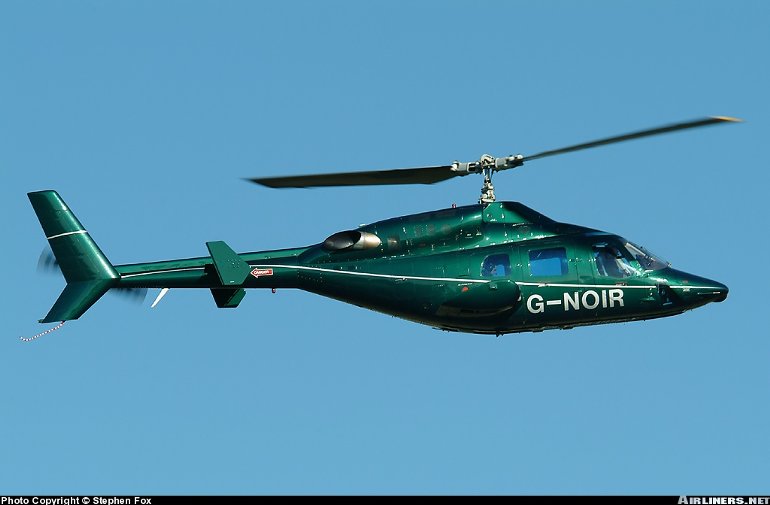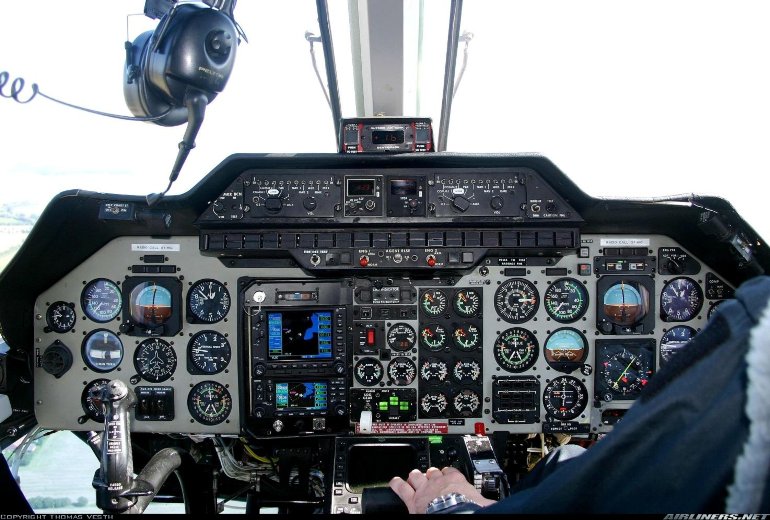Aircraft Technical Data
Bell 222 & 230


| Details | |
| Country of Origin | Canada and USA |
| Type | Twin engine light utility helicopters |
| History | Bell announced development of the all new 222 twin in 1974, following the positive response generated by a mockup proposal displayed at that year's Helicopter Association of America convention. Having taken note of potential customers' preferences and suggestions, Bell modified its design accordingly, and the subsequent development effort led to the Model 222's first flight in August 1976. A number of advanced features were designed into the 222, including the Noda Matic vibration reduction system developed for the 214ST, stub wings housing the retractable undercarriage, provision for IFR avionics, and dual hydraulic and electrical systems. The 222 was awarded FAA certification in December 1979. Production deliveries commenced in early 1980. Subsequent development led to the more powerful 222B with a larger diameter main rotor, introduced in 1982, and the essentially similar 222UT Utility Twin, which features skid landing gear in place of wheels. The Bell 230 is a development of the 222 with two Allison 250 turboshafts instead of the 222's LTS 101s plus other refinements. First flight of a 230, a converted 222, took place on August 12 1991, and Transport Canada certification was awarded in March 1992. The first delivery of a production 230 occurred that November and customers had a choice of skid or wheel undercarriage. Production ceased in 1995. The 230 has been replaced by the stretched, more powerful 430, described separately. |
| Powerplants | 222B - Two 505kW (680shp) Avco (Textron) Lycoming LTS 101750C turboshafts driving a two blade main rotor and two blade tail rotor. 230 - Initially two 520kW (700shp) takeoff rated Allison 250C30G2 turboshafts. |
| Performance | 222B - Max cruising speed 240km/h (130kt). Initial rate of climb 1730ft/min. Hovering ceiling in ground effect 10,300ft. Range with no reserves 724km (390nm). 230 - Max cruising speed (with wheels) 261km/h (141kt), economical cruising speed (with wheels) 256km/h (138kt). Service ceiling 15,500ft. Hovering ceiling in ground effect 12,400ft. Range at economical cruising speed, with standard fuel, wheels and no reserves 558km (301nm), or 713km (385nm) with skids; range with wheels and auxiliary fuel, no reserves 702km (380nm). |
| Weights | 222B - Empty equipped 2076kg (4577lb), max takeoff 3472kg (8250lb). 230 - Empty with wheels 2312kg (5097lb), max takeoff 3810kg (8400lb). |
| Dimensions | 222B - Main rotor diameter 12.80m (42ft 0in), fuselage length 12.85m (42ft 2in), height 3.51m (11ft 6in). Main rotor disc area 128.7m2 (1385.4sq ft). 230 - Main rotor diameter 12.80m (42ft 0in), length overall 15.23m (50ft 0in), fuselage length with wheels 12.87m (42ft 3in), with skids 12.81m (42ft 0in), height overall with skids 3.20m (12ft 2in). Main rotor disc area 128.7m2 (1385.4sq ft). |
| Capacity | Standard seating for eight, including pilot, in four rows. Alternatively four in main cabin in club configuration. |
| Production | 184 Bell 222s built. Bell built 38 230s between 1992 and August 1995. |
| Related Links | Bell 222 & 230 |
The backbone of this section is from the The International Directory of Civil Aircraft by Gerard Frawley and used with permission. To get your own copy of the book click here. |
|








